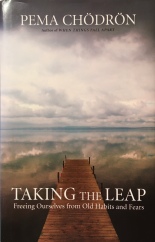To start with, an experiment:
Imagine we’ve just met at a gathering of some kind, and, noticing your duds, I say, “I love your shirt! I love your shirt, I love your shirt, I love your shirt, I love your shirt! I love your shirt, I love your shirt, I love your shirt, I love your shirt, I love your shirt, I hate your shoes, I love your shirt, I love your shirt, I love your shirt, I love your shirt!”
Now, what sticks with you most powerfully from what I’ve just said? Betcha it’s not “I love your shirt,” even though the ratio of “I love your shirt” to “I hate your shoes” was 14 to 1. Which your rational brain knows perfectly well, right?…and which knowledge does not make a bit of difference, I’ll bet, in what sticks emotionally, which is that I also said I “hate your shoes.”
I love this exercise for the way it demonstrates so directly and powerfully the way our brains are wired: the reason that “I hate your shoes” is the one that both triggers an emotional reaction and sticks in our memory most powerfully is that the fastest acting part of our brains (the amygdala) is the part wired to detect, remember, and respond to danger. Even a sliver of perceived negativity (hostility, rejection) will trigger this part of our brain, which knows that any negative experience could indicate a potential threat to our survival…and our survival (not our ability to thrive, mind you; solely our survival) is it’s job. Our cerebral cortex (where rational thought occurs, and also where we experience compassion and empathy for ourselves and others) on the other hand, is much slower-acting, and in fact tends to shut down when the amygdala is activated.

Which is very, very important to our survival, but does not help us a bit in developing and holding onto (in the presence of fear, I mean), compassion, empathy, empathetic imagination, lovingkindness, trust, imagination, curiosity, and other feelings of positive connection with ourselves and others. And since the amygdala is pretty much set on “automatic” (not to mention always being the loudest voice in the room of our minds when triggered, so it tends to dominate our inner conversations when left unmanaged), it has an advantage over the activity of the cerebral cortex, which is pretty much set on “manual.”
So the challenge (and a lot of therapy approaches, sports skill-building and discipline, and mindfulness practices are really all about doing exactly this:) is to deliberately develop the “message muscles” (I just made that up) of the frontal cortex. When we engage in practices which help to deliberately keeping that part of our brains “online” longer, and cultivate the capacity to observe ourselves and our reactions with compassion and acceptance, we begin to become more and more able to recruit that part of ourselves in the midst of strong reactions, to take care of ourselves and of others, rather than simply react with “fight, flight or freeze.”
I’d like to share an experience of my own which showed me the power of this: after I had been been plagued by panic attacks for years, one of my sisters (who had been similarly plagued) shared a little book with me which described a kind of mindfulness practice (though it wasn’t called that in those days) that I began practicing regularly. Stuck on an airplane at 40,000 feet one day, I felt a panic attack come on, along with the awareness that there was no escape (at that time, going for a run was my go-to in a panic attack, and that wasn’t going to happen). I remember distinctly having the thought, right in the midst of the panic, “Oh, here this is. Well, I think I’ll just sit in my seat here and do a little reading until it passes.” The panic attack still happened, and while it was just as powerful an experience as it would have been otherwise –panic is panic– the practices had made me familiar with, and able to recruit, the “I” which could sit in the “eye” of the hurricane and observe it, knowing that I wasn’t the hurricane.
In her little book, Taking the Leap: Freeing Ourselves from Old Habits and Fears,  wisdom teacher Pema Chödrön offers a number of practices for breaking the hold of our reactive brains, and cultivating and strengthening the parts of ourselves that have the natural capacity to stay open, warm, and “awake” and aware, and so able to actually receive from the world, not just defend against it. Many of these practices are simple and informal, requiring no additional commitment of time, but only intention and remembering. “Pausing” practice (which one can do any time —and preferably several times— in a day) is one of these.
wisdom teacher Pema Chödrön offers a number of practices for breaking the hold of our reactive brains, and cultivating and strengthening the parts of ourselves that have the natural capacity to stay open, warm, and “awake” and aware, and so able to actually receive from the world, not just defend against it. Many of these practices are simple and informal, requiring no additional commitment of time, but only intention and remembering. “Pausing” practice (which one can do any time —and preferably several times— in a day) is one of these.
Pausing, she writes, creates a momentary contrast between being completely self-absorbed, and being awake and present. You just stop for a few seconds,  breathe deeply, and move on. You don’t want to make it a project […] In the middle of just living, which is usually a pretty caught-up experience characterized by a lot of internal discussion with yourself, you just pause.
breathe deeply, and move on. You don’t want to make it a project […] In the middle of just living, which is usually a pretty caught-up experience characterized by a lot of internal discussion with yourself, you just pause.
In my own “pausing” practice, I have found it enormously helpful to make an effort to also notice (and so to take in) what is positive in that moment, within and without: the presence of a loved one, the sunlight, the way I was able to either refrain from or respond to someone in a way I liked, today.
Or maybe to remember and to savor how someone had told me how much they liked my shirt.